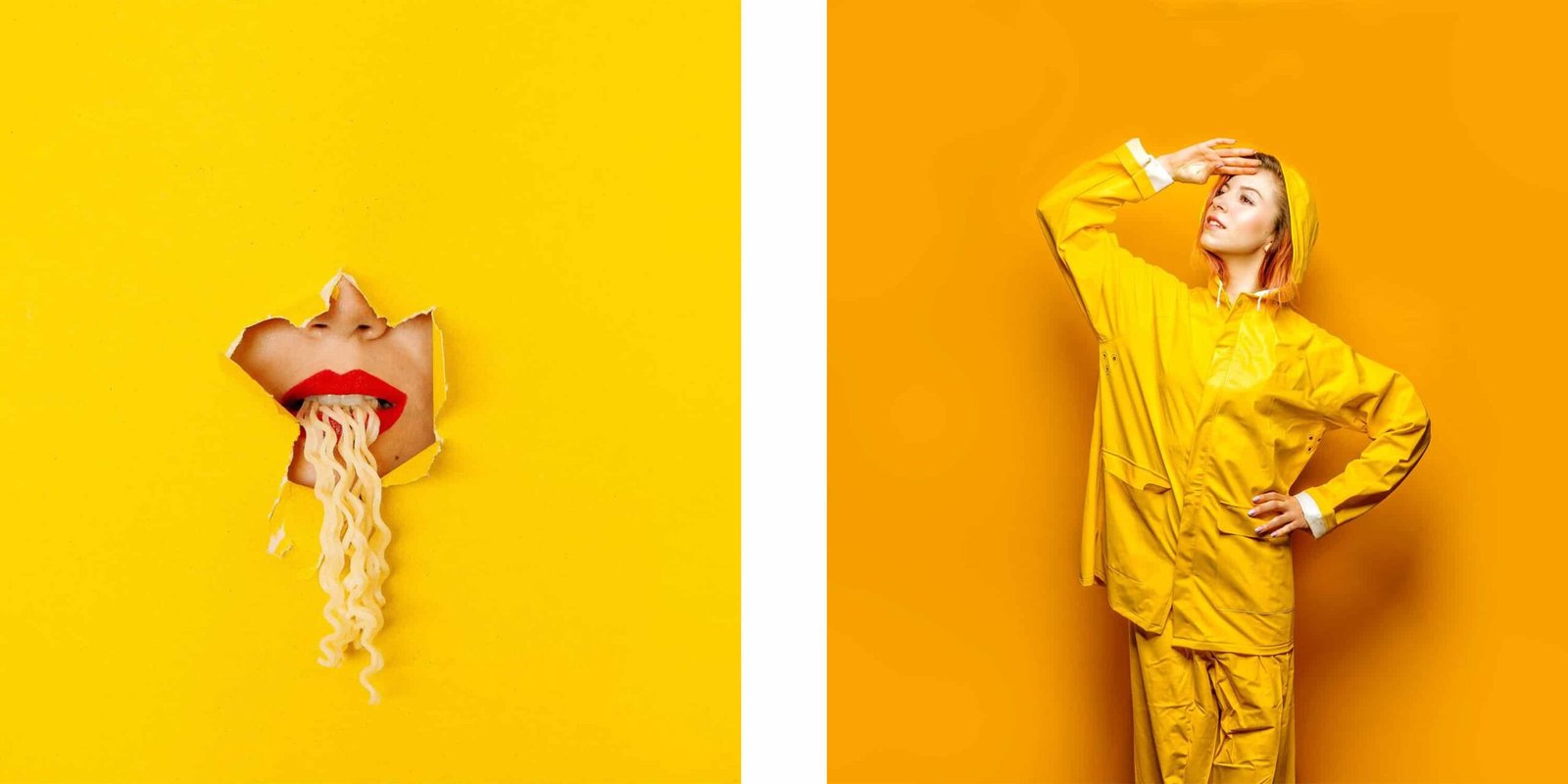Colour is a multifaceted element of design that transcends mere aesthetics; it is a powerful instrument for shaping perceptions, evoking emotions, and influencing decisions. In the realm of digital marketing, understanding the intricacies of colour psychology is not just beneficial but imperative for crafting compelling web designs and cultivating strong brand identities.
The Psychology of Colour in Web Design and Branding

About to read
Understanding Colour Psychology
Have you ever pondered why certain websites exude an aura of tranquillity and relaxation, while others inspire excitement and motivation? The answer lies in the realm of colour psychology.
Colour psychology delves into the intricate relationship between colours and human emotions and behaviours. Warm colours like red and yellow have the remarkable ability to ignite feelings of energy and passion, making them ideal for calls to action. Conversely, cool colours like blue and green can instil a sense of calm and trust, making them perfect for brands seeking to convey reliability and professionalism.
It’s important to note that the emotional resonance of colours is deeply ingrained in our psychology, often rooted in our cultural and evolutionary history. For instance, red, with its associations with fire and blood, is often linked to strong emotions such as love and anger. Yellow, reminiscent of the sun, invokes feelings of happiness and warmth, while green, mirroring the hues of nature, signifies growth and harmony.

The Role of Colour in Branding
In the world of branding, colours are akin to the distinct personalities that differentiate one brand from another. They serve as the bedrock upon which brand identity is built.
Consider some of the world’s most iconic brands. McDonald’s employs vibrant red and cheerful yellow to convey a sense of fun, urgency, and friendliness. Facebook’s iconic blue represents trust, reliability, and the essence of connecting people across the globe. Similarly, Coca-Cola’s striking red logo symbolises excitement, happiness, and the joy of sharing moments with loved ones.
Brands have long recognised the power of colour in imprinting themselves into the minds of consumers. It’s not just about choosing a colour; it’s about making that colour synonymous with the brand. When you see Tiffany & Co.’s signature robin’s egg blue, you think of luxury and elegance. When you encounter the unmistakable green of Starbucks, it evokes the comfort of your favourite coffee shop.
In essence, colours become the silent ambassadors of brands, conveying messages, emotions, and experiences that resonate with customers on a deep, often subconscious, level.
Using Colour in Web Design
When it comes to web design, the significance of colour choices cannot be overstated. These choices are the building blocks of a user’s digital experience.
A well-considered colour palette has the ability to create a harmonious, visually pleasing website that engages users effectively. Conversely, haphazard and incoherent colour choices can lead to confusion and a lacklustre user experience.
The impact of colour in web design extends beyond aesthetics. It influences user behaviour, navigation, and the overall perception of your brand. For instance, the strategic use of colour can guide users’ attention to key elements on a webpage, such as call-to-action buttons or product listings.
Imagine visiting a website where the colour scheme clashes, creating visual chaos. It’s disorienting, and you’re likely to bounce away in search of a more visually pleasing and user-friendly alternative. But when colours are harmoniously integrated, they create an inviting and intuitive digital environment, encouraging visitors to stay, explore, and engage.
Beyond aesthetics, the psychology of colour plays a pivotal role in user interaction. Consider a health and wellness website. The use of calming, nature-inspired colours like soft greens and blues can evoke a sense of relaxation and trust, making visitors more receptive to the content and more likely to explore the site further.
Conversely, a technology-focused website might employ bold and dynamic colours like red and orange to convey energy and excitement. These colours can drive visitors to take action, whether it’s signing up for a newsletter or exploring the latest gadgets.
Moreover, the strategic use of colour can serve as a visual roadmap for users. By employing a consistent colour scheme, you can direct attention to specific elements on a webpage. For instance, a brightly coloured “Buy Now” button amid a sea of subdued colours is hard to miss, making it more likely for users to take the desired action.
In essence, colour in web design isn’t just about making things look pretty; it’s a powerful tool for enhancing usability, conveying brand identity, and driving user engagement.

Practical Applications
1. Choose Your Brand’s Colour Wisely
The first step is to carefully select the colours that will define your brand. Consider the emotions and perceptions you want your brand to evoke. Your chosen colours should resonate with your brand’s identity and messaging.
When selecting your brand colours, think not only about the immediate emotional response but also the long-term association. Your brand’s colours should stand the test of time and continue to convey the essence of your brand even as it evolves.
For instance, if you’re launching a health and wellness brand, opting for serene blues and greens can convey a sense of tranquillity and trust. These colours align with the core values of wellness and relaxation, creating a cohesive and compelling brand identity.
On the other hand, if you’re in the tech industry and want to project innovation and excitement, vibrant colours like electric blue or bold red can captivate your audience and ignite their curiosity.
2. Consistency is Key
To establish a strong brand presence, maintain consistency across all touchpoints. Utilise your chosen colours in your logo, website, marketing materials, and even physical locations, if applicable.
Consistency breeds familiarity and trust. When customers encounter your brand in various contexts, the uniform use of colours reinforces your brand’s identity and message.
Consider the iconic red and yellow of McDonald’s. These colours are not only present in their logo but also in their restaurant decor, packaging, and even employee uniforms. This consistency reinforces the brand’s identity and creates a memorable and cohesive brand experience.
3. Test and Adapt
Don’t be afraid to experiment and fine-tune your colour choices. A/B testing can provide valuable insights into which colour variations yield better user engagement and higher conversion rates.
A/B testing allows you to measure the real-world impact of colour changes on user behaviour. It can reveal which colour combinations lead to more click-throughs, longer time spent on your website, and ultimately, higher conversion rates.
For example, if you run an e-commerce website, testing different button colours for your “Add to Cart” and “Checkout” buttons can yield significant results. You might discover that a vibrant green “Checkout” button outperforms a muted grey one, driving more users to complete their purchases.
Moreover, A/B testing can uncover valuable insights into the psychological impact of colour on user behaviour. You might find that using warm, inviting colours in your email marketing campaigns leads to higher open and click-through rates, as these colours evoke positive emotions and encourage action.
4. Cultural Considerations
It’s crucial to recognise that the perception of colours can vary across cultures. While some colours may have universal associations, others can carry different meanings in different parts of the world.
Before expanding into international markets, research the cultural connotations of your brand’s colours to avoid unintentional misunderstandings or negative associations.
For example, the colour white is often associated with purity and weddings in Western cultures. However, in some Asian cultures, white is linked to mourning and funerals. Understanding these cultural nuances can prevent miscommunications and ensure that your brand is received positively across diverse markets.
In summary, being culturally sensitive to the impact of colour can be a valuable asset in your global branding strategy.

Conclusion
In the dynamic realm of digital marketing, colour serves as a silent yet immensely potent communicator. By harnessing the psychology of colour in web design and branding, you can forge a deeper connection with your audience, convey your brand’s distinct personality, and ultimately, drive unparalleled success.
Colour isn’t merely a visual element; it’s a language of emotions and perceptions. When wielded strategically, it can elevate your brand above the competition and create lasting impressions that resonate with customers.
So, are you prepared to revolutionise your web design and branding through the transformative potential of colour psychology? Connect with us, your digital marketing partner, for expert guidance and strategies meticulously tailored to your unique needs.


